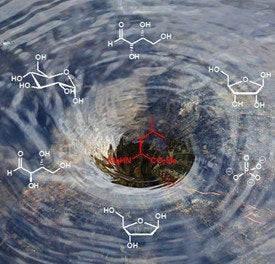
How did life originate from lifeless matter? It's a question that has long puzzled scientists - and fueled the doubts of those who question the overwhelming scientific evidence that evolutionary processes explain the origins of life. But chemists at England's University of York and University of Nottingham are reporting what they call a significant advance toward our understanding of the chemistry of a pair of sugar molecules that are essential for life.
Their research, published in Organic & Biomolecular Chemistry, essentially recreates the process that may have led to the formation of two sugars, threose and erythrose.
"There are a lot of fundamental questions about the origins of life and many people think they are questions about biology," University of York researcher Dr. Paul Clarke said in a written statement. "But for life to have evolved, you have to have a moment when non-living things become living - everything up to that point is chemistry."
Biologists have long known that the sugar molecules in living organisms occur in the so-called "right-handed" form. Paradoxically, the amino acids that make up proteins - another major building block of life - are "left-handed." But the chemists found that left-handed amino acids could be used to prompt the formation of right-handed sugars. The finding seems to explain how the sugars originated and why only the right-handed forms dominate in nature.
"What we have achieved is the first step on that pathway to show how the simple sugars threose and erythrose originated," Clarke said in the statement. "We generated these sugars from a very simple set of materials that most scientists believe were around at the time that life began."
The study is reminiscent of the landmark Miller-Urey study, which showed that the building blocks of life can form from simple chemical reactions. The 1952 study simulated the hypothetical conditions of early Earth, showing that electrical activity like that associated with lightning can prompt the formation of amino acids.
